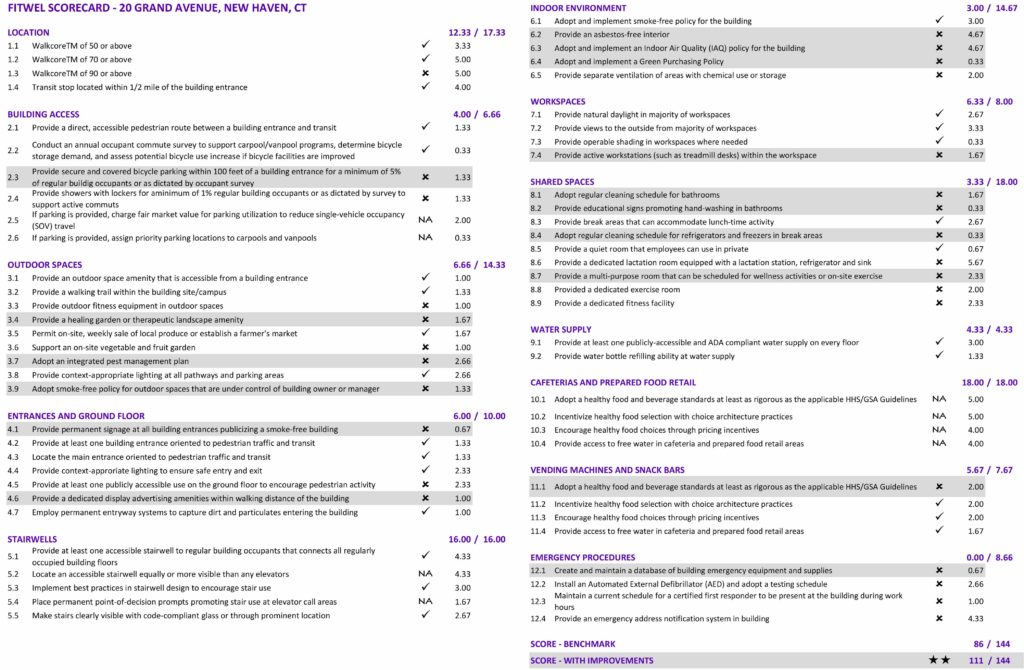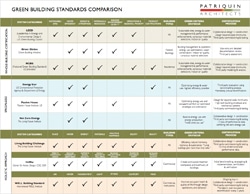 Big news around these parts—we have taken the Fitwel test!
Big news around these parts—we have taken the Fitwel test!
The Fitwel System is a building certification standard that optimizes building occupant health and productivity through targeted improvements to workplace design and policies. Typically, these measure large office complexes or government buildings. But we thought it would be fun to look into how a small office like ours would rank, and what we could do to better our workplace health index.
First, let’s explain our situation. Our office is in New Haven—a ‘walkable’ small city next to a riverside park, with bus lines along our street and 2 bike routes at our doorstep. It is a historic brick building with storefront windows on the street, a parking lot behind and a landscaped garden between the parking lot and the building. Our office building has three floors—two office tenants and a shared attic space for large conferences.
Creating a benchmark
We ranked our current situation by working with the Fitwel scorecard. We checked off all the strategies that apply to our current situation and calculated the overall points. (Note: categories that are answered as ‘not applicable’ allow the user to count those points as if they did apply and the strategy was met.)
We found that, as a baseline, we scored 86 out of a possible 144 points—not quite making the 1-star certification mark. Ranking for certification is:
- 1 star – 90-104 points
- 2 stars – 105-124 points
- 3 stars – 125-144 points
We did fairly well on Location and Building Access, not so well on Outdoor Spaces and Entrances/Ground Floor, though these categories we can improve on. We got full points for ‘Stairwells’ because this is a category where we can say ‘not applicable,’ as we occupy only the first floor. We need to improve on ‘Shared Spaces’ and ‘Emergency Procedures’, but do well on ‘Water Supply’ and ‘Vending Machines/Snack Bars.’
How we can do better
Next, we looked at line items where we could improve (shown in gray on the scorecard sample above), and found that we could accumulate 25 more points, for a total of 111 points—a 2-star score.
Some of the areas we will consider improving include:
- Providing secure and covered bicycle parking (if staff would use it and our landlord agrees);
- Providing a healing or therapeutic landscape amenity;
- Adopting (officially) a smoke-free policy for outdoor spaces and proving permanent signage for such at all entrances;
- Providing a display of amenities within walking distance of the building;
- Adopting and implementing a green purchasing policy;
- Providing active workstations within the workspace (we already have stand-up desks, so this isn’t a stretch).
We will be implementing a number of these strategies to create a healthier workspace. And we wholeheartedly believe that small changes like these add up to a big impact for our environment. Stay tuned as we make progress…
Are you looking to make your next project “green,” but don’t know where to start?
Download our free Green Building Standards Comparison and get an at-a-glance view of the various standards for environmentally responsible design and construction.



